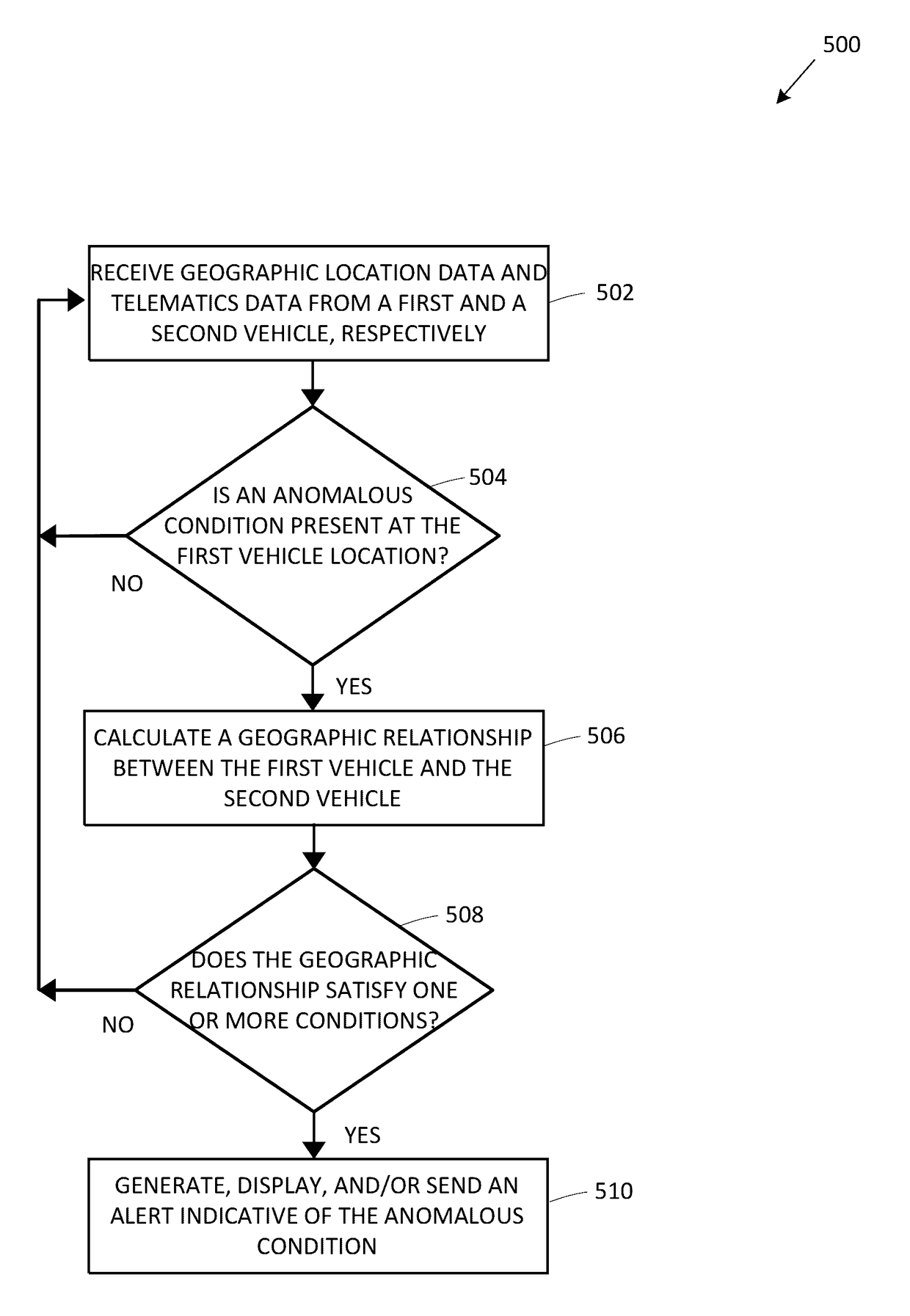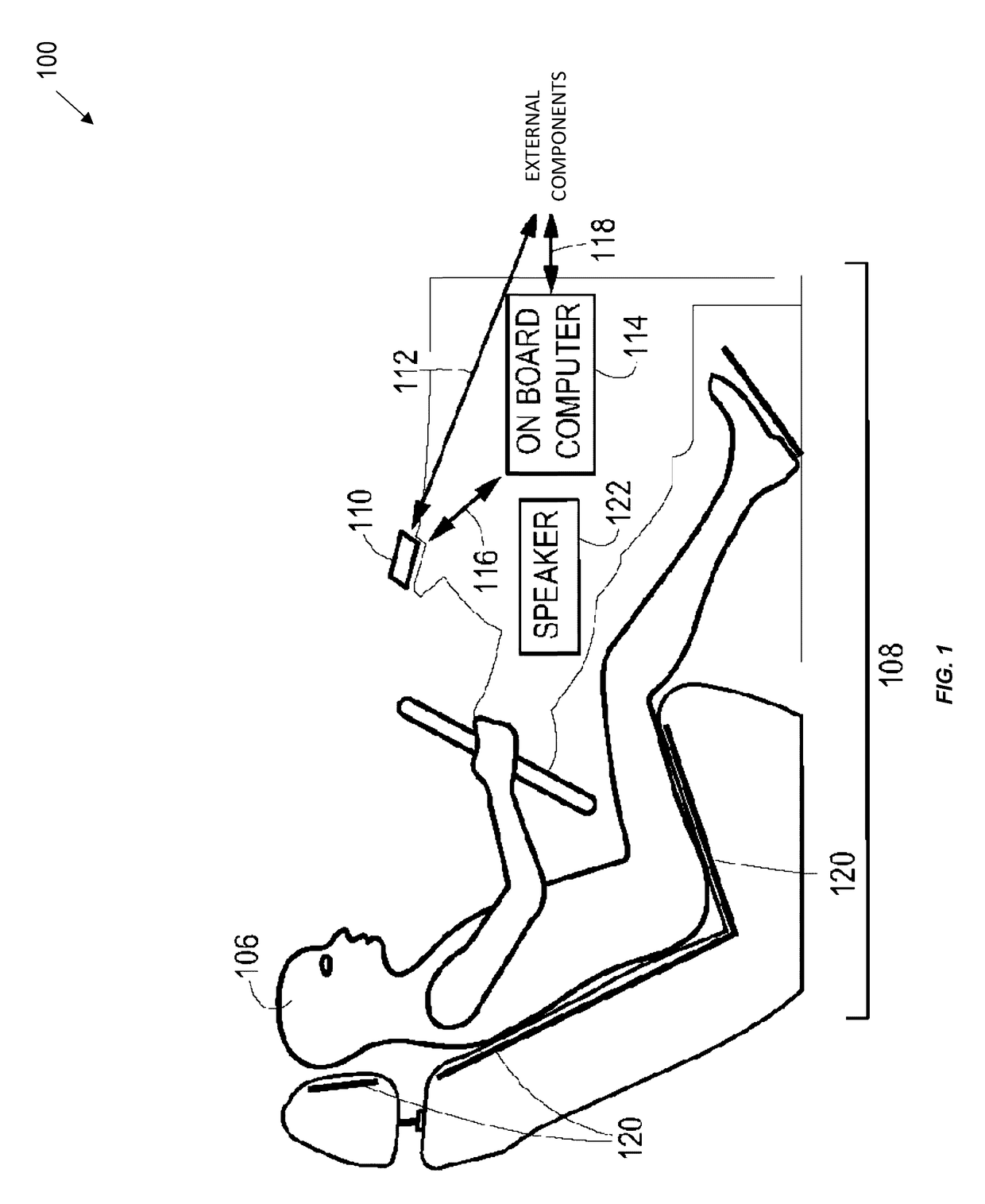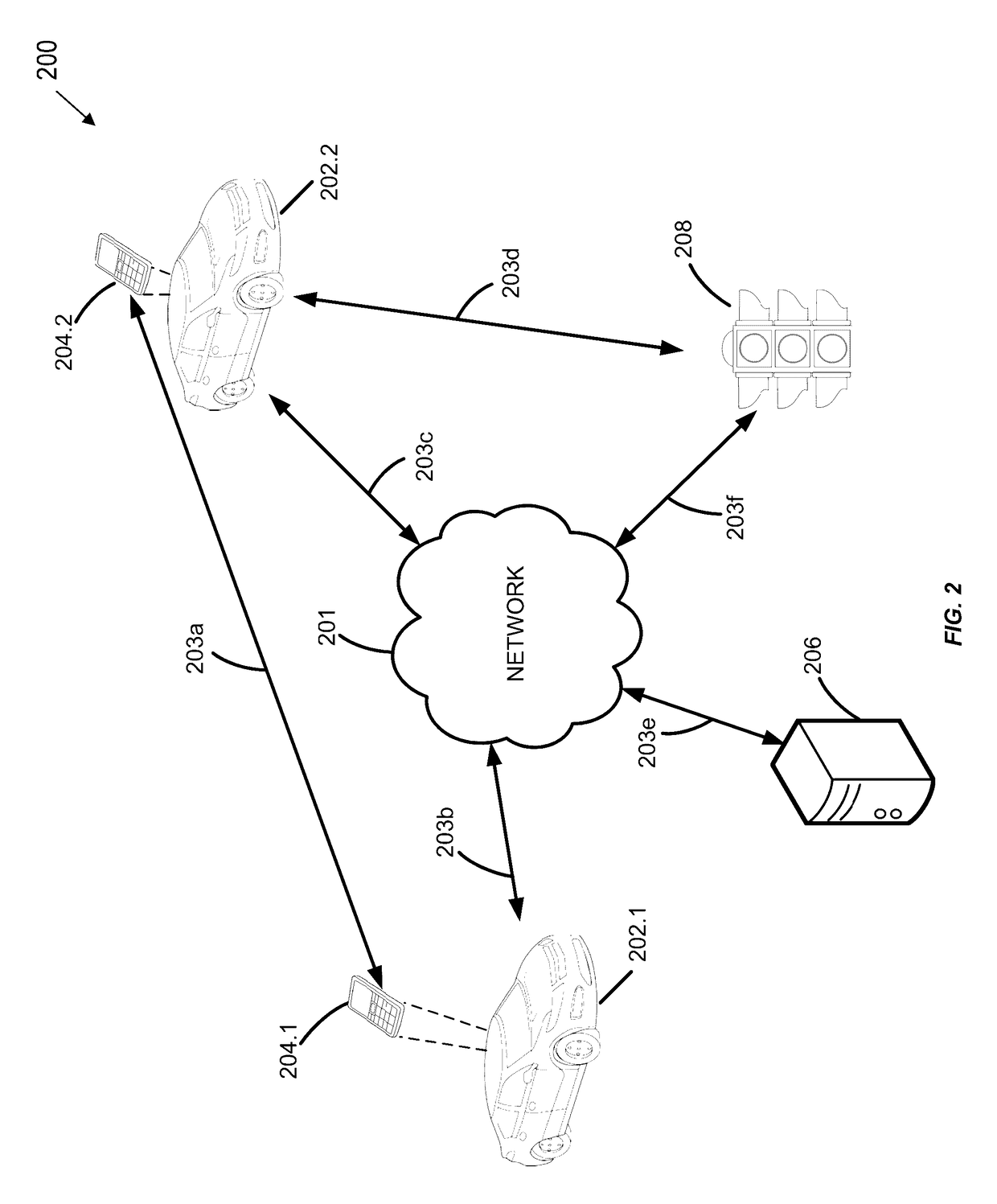Alert notifications utilizing broadcasted telematics data
a technology of alert notifications and broadcast telematics, applied in the direction of simultaneous traffic control systems, wireless architecture, navigation instruments, etc., can solve the problems of conventional telematics devices and data gathering techniques, and achieve the effects of facilitating driving, reducing the risk of an accident, and facilitating driving
- Summary
- Abstract
- Description
- Claims
- Application Information
AI Technical Summary
Benefits of technology
Problems solved by technology
Method used
Image
Examples
Embodiment Construction
[0020]The present embodiments relate to, inter alia, determining whether an anomalous condition is detected at the location of a vehicle using one or more computing devices within or otherwise associated with the vehicle. If the detected anomalous condition may impact or affect another vehicle on the road, embodiments are described to generate and / or send alert notifications to other vehicles that may be so affected. As further described throughout the disclosure, the process of detecting anomalous conditions and whether they apply to other vehicles may be performed through an analysis geographic location data and / or telematics data broadcasted from one or more computing devices within or otherwise associated with one or more respective vehicles.
[0021]The present embodiments may relate to collecting, transmitting, and / or receiving telematics data; and may include a mobile device, a vehicle-mounted processor, computer server, web pages, applications, software modules, user interfaces...
PUM
 Login to View More
Login to View More Abstract
Description
Claims
Application Information
 Login to View More
Login to View More - R&D
- Intellectual Property
- Life Sciences
- Materials
- Tech Scout
- Unparalleled Data Quality
- Higher Quality Content
- 60% Fewer Hallucinations
Browse by: Latest US Patents, China's latest patents, Technical Efficacy Thesaurus, Application Domain, Technology Topic, Popular Technical Reports.
© 2025 PatSnap. All rights reserved.Legal|Privacy policy|Modern Slavery Act Transparency Statement|Sitemap|About US| Contact US: help@patsnap.com



